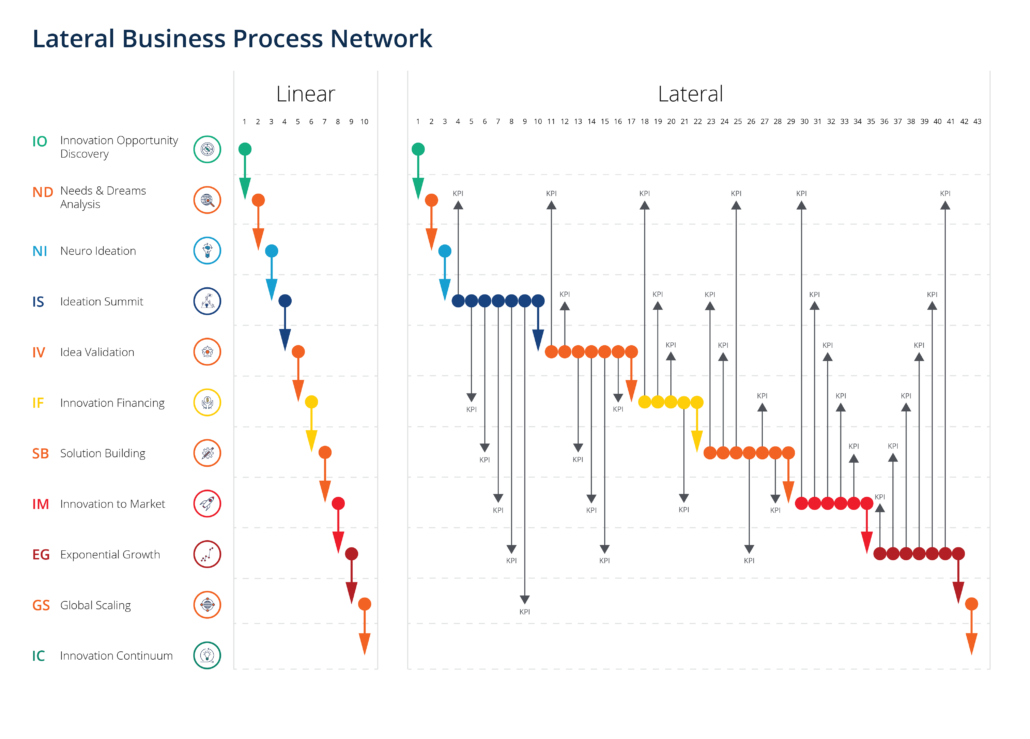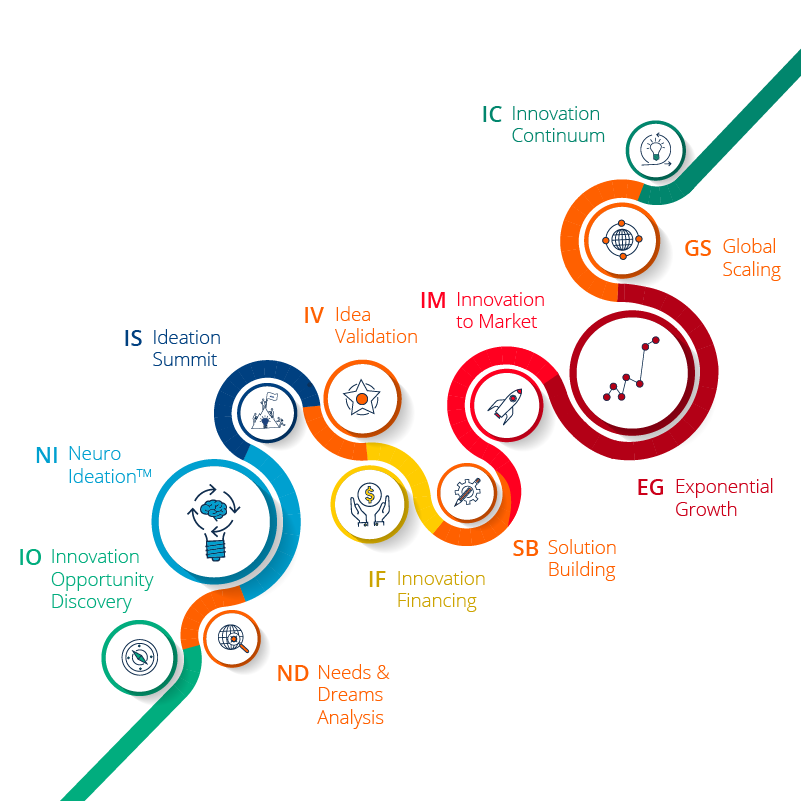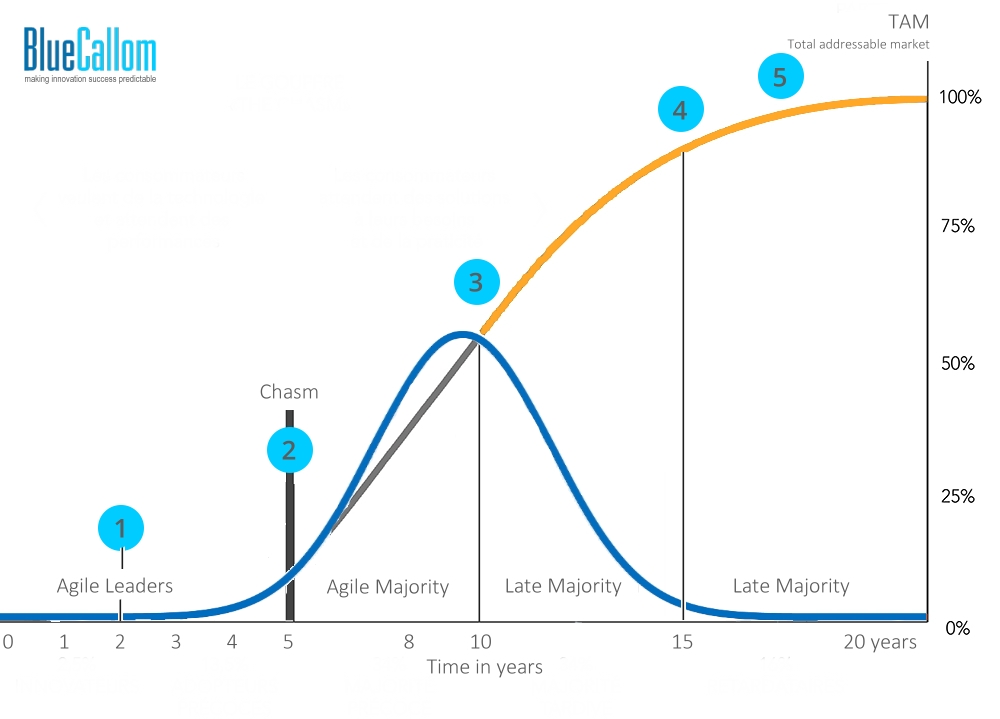| IO) Innovation Opportunity Discovery |
 |
From neuroscience we learned that every idea ever created, was a composition of past experiences. There is no, more relevant experience owner in the market than our customers. The value of Open Innovation Theory is now scientifically proven. The new Innovation Opportunity Discovery method is using that knowledge and helps identify the biggest innovation opportunities and provides the inputs to turn the inputs into groundbreaking. A methodical approach to analyze opportunities and areas where disruption could be possible and innovation is necessary.
Typically a four-week episode in the innovation journey. |
|
|
|
| ND) Needs & Dreams Analysis |
 |
With the vast experience repository of customers, we start finding out what the needs and most importantly the dreams of our customers are. A uniquely formed interview process will allow for deeper involvement with the market, unfolding the needed information to compose innovative ideas in the following Neuro Ideation episode. History has proven that ideation in a lab, isolated from its designated market has either a chance like laying in the lottery or no chance at all.
Typically a four-week episode in the innovation journey.
|
| NI) Neuro Ideation™ |
 |
The Deep Innovation Method was developed with today’s neuroscience-based understanding of how our brain creates and processes ideas. The method explains how we stimulate our brain without drugs or other external forces to release deeper, complex wired idea associations. Neuro Ideation re-thinks the basic principle of a problem, stimulates the brain to consider unrelated analogous situations, motivates idea confluence, and ends with a CallomBurst that is creating unique and groundbreaking ideas. Another interesting aspect is time management. If an innovation team would not get to breakthrough ideas within four weeks, it would most likely never get there.
Typically a four-week episode in the innovation journey.
|
IS) Ideation Summit
|
 |
The ideation summit is the highest point of the ideation process where you have reached the furthest state of innovative thinking. It’s the apex of the mountain you climbed seeing the world like at no place in the journey. From here you compile your disruptive innovation concept and form the strategy to get there. You craft the path from where you are today to a point in time where you have no idea how the ultimate solution can be created. Yet you know you will find ways to solve the unsolved parts in the future.
Typically a two-week episode in the innovation journey.
|
IV) Idea Validation
|
 |
The method uncovers early on whether an innovative idea is meeting the needs of the intended audience. Idea validation is a strategic measure before serious investments are made. The method contains a series of actions, including market readiness, feedback scoring, stakeholder buy-in, resource availability, and sustainability checks for an informed decision-making process.
Typically a four-week episode in the innovation journey.
|
| IF) Innovation Financing |
 |
Financing innovation proves to be the biggest hurdle in turning innovative concepts into reality. Neither classical corporate investment plan structures nor startup business plan models work. The Innovation Financing Method was built as a hybrid of both models suitable for enterprises. Innovation Finance may become a new discipline within conventional corporate finance. To ensure innovation financing the innovation team has to have an innovation specific KPI-Framework that can be understood and appreciated by the corporate finance teams. And within this framework, idea validation from the market side plays the most critical role.
Typically a two-week episode in the innovation journey.
|
SB) Solution Building
|
 |
The “Solution Building” is an innovative way to get a first Minimum Viable Product (MVP). An innovative product or service design is only half the battle. Products need to be integrated into the customer’s lives, behaviors, KPIs, peer data, and more. Another part of an innovative solution is business model integration. The product will need to represent the business model and not the other way around. In our own experience, businesses won because of the interconnections between product, user experience, business model, and innovation-specific use-case KPIs.
Typically a four-month episode in the innovation journey.
|
IM) Innovation to Market
|
 |
The “Innovation to Market” Method helps craft a unique go-to-market strategy with limited budgets, yet fast development of the designated market. Innovation-to-market is a methodology kit using ‘Solution Embedded Marketing’ features, integrated ‘Network Effects’, ‘Scaling Audience Development’, and other methods. The “Innovation to Market” method provides detailed guidance and growth hacking techniques for different go-to-market approaches. The initial success of an innovation is measured by its fast acceptance rate by early adopters.
Typically a four-month episode in the innovation journey.
|
EG) Exponential Growth
|
 |
As soon as the first reference customers exist, the team must focus on exponential growth to prevent other market entrants and also keep the confidence in the solution. Growing exponentially means a growth rate of 30% per month, every month for the next two years. This needs profoundly different mechanisms than conventional sales and marketing departments can deliver – no matter how successful they are.
Also financing such a growth rate has never been seen in an enterprise and quickly becomes another challenge. The growth method addresses those unique situations and provides several tactics to achieve exponential growth.
Typically a two-year episode in the innovation journey.
|
GS) Global Scaling
|
 |
When scaling innovative solutions globally the mechanism is not comparable with established solutions and bringing improvements, no matter how significant to market. Like in the local markets also the global markets need early adopters to start a movement, references from the initial market as the remote, local markets need to go through a similar education. Logistics may be different and also the production needs to be differently scaled as the remote markets may behave differently. The same goes for sales, support, localization, and all other aspects of a going global strategy.
Typically a three-year episode in the innovation journey.
|
IC) Innovation Continuum
|
 |
Up until today, even the greatest inventors could not find ways to repeatedly innovate. The following generations mainly grew their companies in size, but not in innovativeness. However, in today’s world, when more innovative companies are entering almost all industry segments, conventional, static organizations are in jeopardy. The Innovation Continuum Model builds on the other innovation-specific BlueCallom methods to provide an approach to continuous innovation.
Typically a four-week episode in the innovation journey.
|




